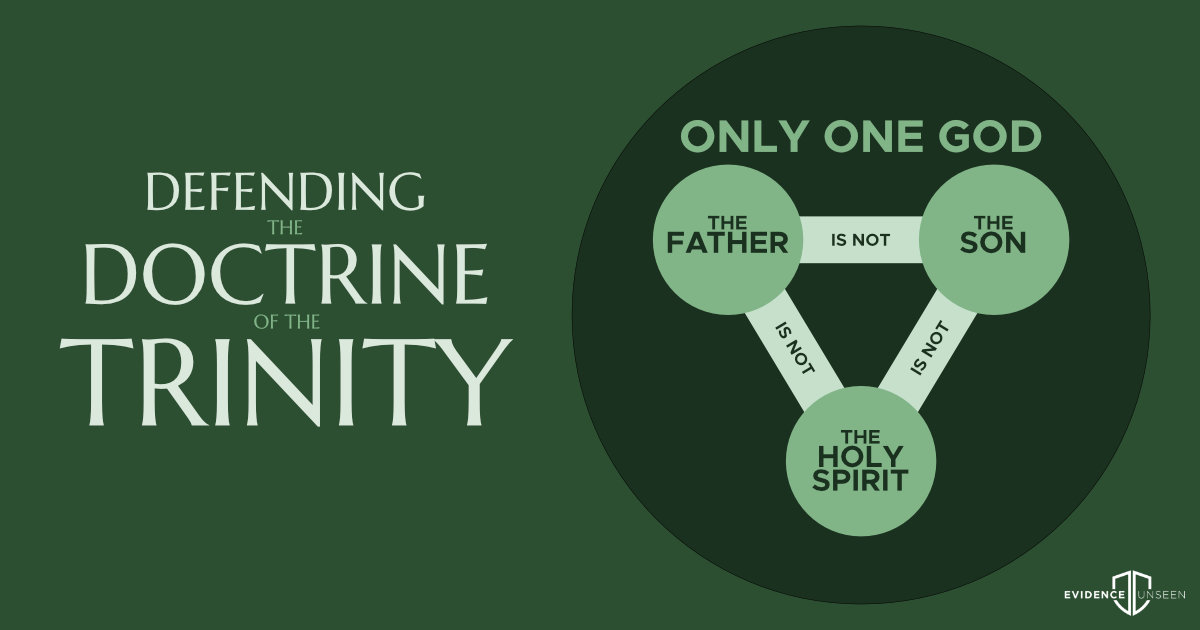 Definitions are key. As one person said, “A problem well-defined is half-solved.” Theologians define the Trinity in these ways:
Definitions are key. As one person said, “A problem well-defined is half-solved.” Theologians define the Trinity in these ways:
Nicene Creed (AD 325): We believe in one God, the Father almighty, maker of all things, visible and invisible; and in one Lord Jesus Christ, the Son of God, begotten from the Father, only-begotten, that is, from the substance of the Father, God from God, light from light, true God from true God, begotten not made, of one substance with the Father, through Whom all things came into being, things in heaven and things on earth, Who because of us men and because of our salvation came down and became incarnate, becoming man, suffered and rose again on the third day, ascended to the heavens, and will come to judge the living and the dead; And in the Holy Spirit. But as for those who say, There was when He was not, and, Before being born He was not, and that He came into existence out of nothing, or who assert that the Son of God is from a different hypostasis or substance (hypostasis or ousia,[1]), or is created, or is subject to alteration or change-these the Catholic[2] Church anathematizes.
Athanasian Creed (AD 293-373): “We worship one God in trinity and the trinity in unity, neither blending their persons nor dividing their essence. For the person of the Father is a distinct person, the person of the Son is another, and that of the Holy Spirit still another. But the divinity of the Father, Son, and Holy Spirit is one, their glory equal, their majesty coeternal… And yet there are not three eternal beings; there is but one eternal being… Thus the Father is God, the Son is God, the Holy Spirit is God. Yet there are not three gods; there is but one God… So in everything, as was said earlier, we must worship their trinity in their unity and their unity in their trinity. Anyone then who desires to be saved should think thus about the trinity.
Richard Swinburne (philosopher): God exists as “three persons in one substance.”[3]
Millard Erickson (theologian): “The three persons constitute three centers of consciousness within the one being, capable of interacting with one another… Each of the three is eternally derived from each of the others, and all three are eternally equal.”[4]
Wayne Grudem (theologian): “God eternally exists as three persons, Father, Son, and Holy Spirit, and each person is fully God, and there is one God.”[5]
James White (theologian): “Within the one Being that is God, there exists eternally three coequal and coeternal persons, namely, the Father, the Son, and the Holy Spirit.”[6]
To simply, we define the Trinity in this way: There is only one God who exists in three separate and distinct persons. That is, God has one essence or nature, but he has three persons or centers of self-consciousness. A person refers to a being that possesses an “intellect, feelings, and will.”[7] This refers to who an individual is. However, an essence refers to the essential properties that make something what it is. Hence, God’s essence refers to what he is, and the individual persons of the Trinity describe who he is.
Defining the Trinity |
|
What the Trinity IS |
What the Trinity is NOT |
|
There is one God who exists in three persons (i.e. three distinct centers of self-consciousness). |
There is one God who is actually three Gods.
There is one Person, which is actually three persons. |
| The Trinity goes beyond human reason.
(That is, we couldn’t discover this aspect of God’s nature without special revelation.) |
The Trinity goes against human reason.
(That is, it is irrational to believe in the Trinity.) |
|
The Trinity is the logical statement that God is one in essence but three in person. |
The Trinity is the illogical statement that three gods can equal one God, or three persons can equal one person. |
| God exists as three separate persons simultaneously. |
God plays the role of three separate roles sequentially. |
Finally, as long as we’re offering definitions, we should add that those who hold to the Trinity are called Trinitarians, while those who deny the Trinity are called Unitarians.
[1] The Greek word hypostasis comes from the words “under” (hypo) and “stand” (stasis). It can refer to what “stands under” something. In modern terms, we would call this the “foundation.” The equivalent for this word in Latin is the term “substance” (substantia).
[2] The term “Catholic” means “universal.” The concept of the Roman Catholic Church developed later in history.
[3] Richard Swinburne in Thomas McCall and Michael Rea (general editors), Philosophical & Theological Essays on the Trinity (Oxford University Press, 2009), p.19.
[4] Millard J. Erickson, Making Sense of the Trinity, 3 Crucial Questions (Grand Rapids, MI: Baker Academic, 2000), 67, 90.
[5] Wayne Grudem, Systematic Theology (Grand Rapids, MI: Zondervan, 1994), 226.
[6] James White, The Forgotten Trinity (Minneapolis, MN: Bethany House, 1998), 26.
[7] Norman L. Geisler, Systematic Theology (Arlington, TX: Bastion Books, 2021), 541.
